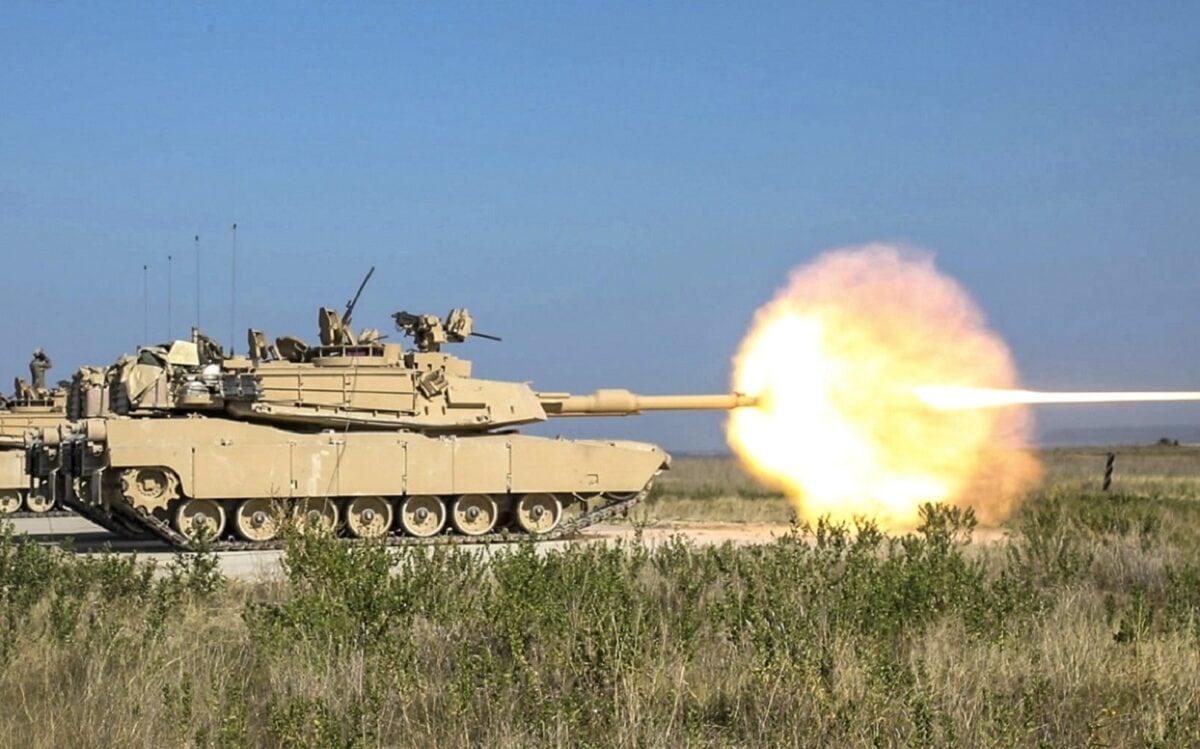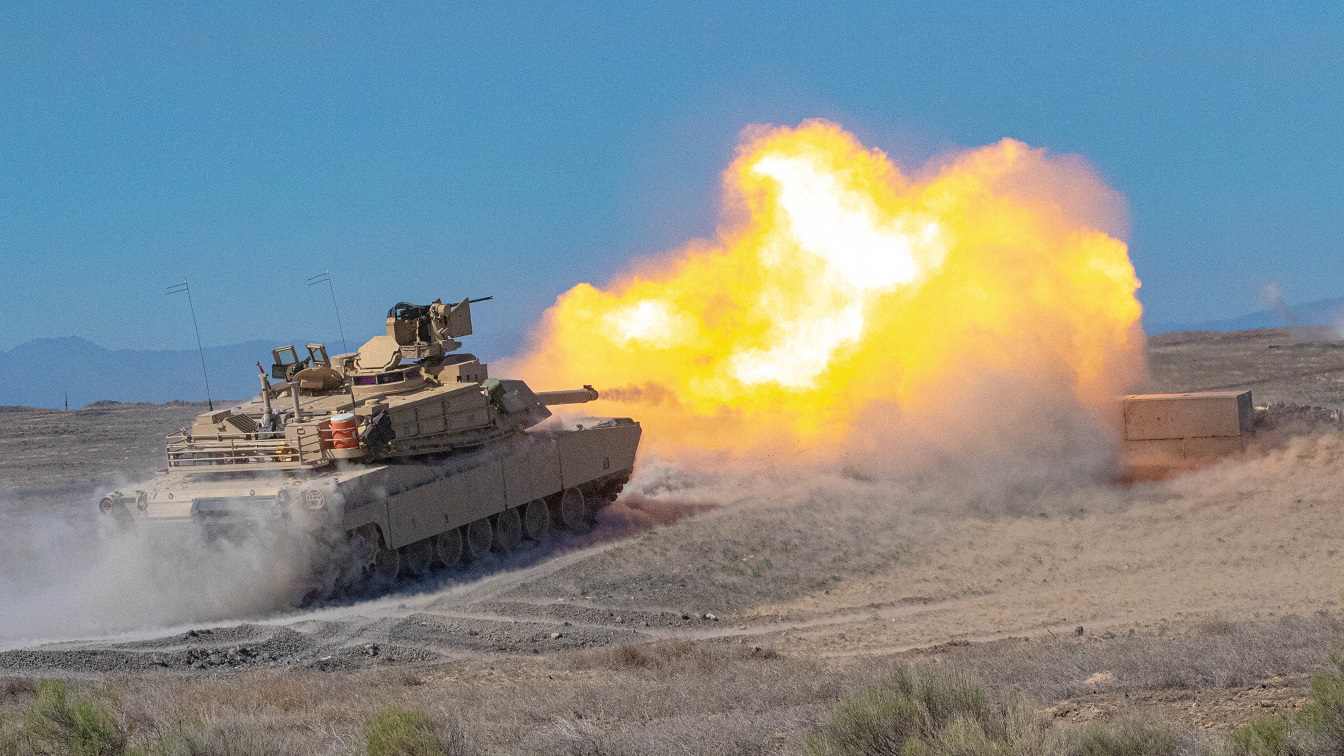The M1 Abrams Keeps Getting Better – SEPv4 Coming Soon – When the M1 Abrams main battle tank (MBT) was first tested in the 1982 REFORGER joint exercises between the United States Army and Canadian Defense Forces, the turbine-equipped vehicles were so silent that they could sneak up on enemy formations. As a result, the tank earned the nickname “Whispering Death.”
The MBT, named for the late General Creighton W. Abrams, former Army Chief of Staff and commander of the 37th Armored Battalion, has been the backbone of the armored forces of the United States military since it was introduced more than 40 years. For its first decade in service, it was actually untested in combat – but in 1991’s Persian Gulf War, it truly shined as one of best tanks in the world.
The improved M1A1 models, which were introduced in 1985, further enhanced the tank’s capabilities. It included a pressurized NBC (nuclear, biological, chemical) system to help protect the crew, as well as a rear bustle rack for improved stowage of supplies and crew belongings, redesigned blow-off panels, and its improved M256A1 120 mm smoothbore cannon. A total of 1,848 M1A1s were deployed to Saudi Arabia to take part in the liberation of Kuwait – not a single one was lost in combat to enemy fire.
Further Upgrades
What continues to make the M1 Abrams one of the best is that it has been continually upgraded over the past four decades in service. In the 1990s, the M1A2 variant was introduced. It included the addition of a commander’s independent thermal viewer, improved weapon station, and embedded diagnostics as well as an improved fire control system. The M1A2 SEP V2 has improved microprocessors, color flat panel displays, improved memory capacity, a better “Soldiermachine interface,” and a new open operating system designed to run the Common Operating Environment (COE) software.
Also known as the M1A2C, the EP version 3 (SEPv3) remains the current production model of the Abrams tank that was scheduled for First Unit Equipped in the fiscal year 2020 (FY20). The improved version was meant to rectify many of the space, weight, and power issues identified during Operation Iraqi Freedom and it has served as the foundational variant for all future incremental upgrades.
In addition to having improved survivability, the Abrams M1A2 SEPv3 was developed to host any mature technology the United States Army deems operationally relevant. Improvements have so far focused on increasing the electrical power margin, Vehicle Health Management Systems, integrated counter-improvised explosive device protection, a new Auxiliary Power Unit enabling silent watch, embedded training, and an Ammunition Data Link. The SEPv3 has been described as the most reliable Abrams tank ever produced, minimizes the U.S. Army’s logistic footprint, and leads the Army in enterprise-level connectivity to maintenance and supply systems.
The M1 Abrams SEPv4
The SEPv3 is not to be the final variant of the Abrams, and since March of this year, the United States Army has been developing what will become the M1A2 SEP version 4 (SEPv4).
“The most lethal Abrams tank is now in development, featuring the third generation (3GEN) FLIR the cornerstone technology that will provide tank crews the ability to identify enemy targets farther than ever before. The 3GEN FLIR will be an upgrade to both sights and will be common with other combat platforms,” the U.S. Army noted about the SEPv4.

3rd Battalion, 8th Cavalry Regiment, 3rd Armored Brigade Combat Team, 1st Cavalry Division sends the first round downrange with the U.S. Army’s new M1A2 SEPV3 Abrams Main Battle Tank, Fort Hood, Texas, August 18, 2020. After the GREYWOLF brigade conducts a test fire on every tank they will dial in their sites by “zeroing” the tanks main gun, ensuring they are fully prepared to conduct future gunnery live fire exercises.
These upgrades will further integrate a color camera, Eye-safe Laser Range Finder, and a cross-platform laser pointer to facilitate multi-domain battle into the commander’s sight. In addition to a lethality upgrade, the M1A2 SEPv4 also promises to include full-embedded training to maximize crew proficiency of the system, the Army also announced. This program was reportedly developed to “onboard” any technology the Army deems critical to the future battlefield to include artificial intelligence, autonomy, APS, or advanced sensors.
These advancements have continued to ensure that the M1 Abrams remains among the most deadly MBTs in service anywhere in the world today and in the years to come.
Expert Biography: A Senior Editor for 19FortyFive, Peter Suciu is a Michigan-based writer who has contributed to more than four dozen magazines, newspapers, and websites with over 3,000 published pieces over a twenty-year career in journalism. He regularly writes about military hardware, firearms history, cybersecurity, and international affairs. Peter is also a Contributing Writer for Forbes. You can follow him on Twitter: @PeterSuciu.

